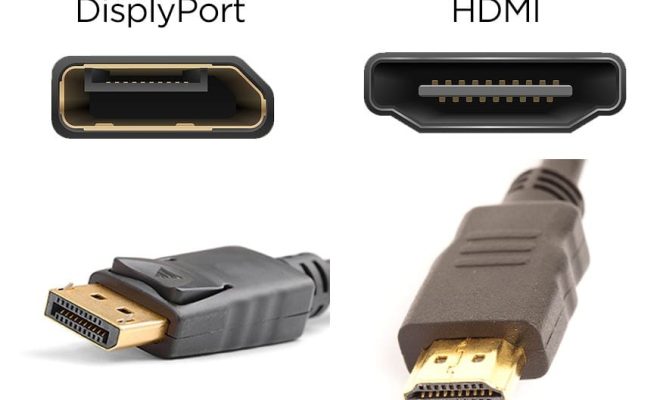Is There a Difference in HDMI Cables? Sort of, but Not Really

When it comes to HDMI (High-Definition Multimedia Interface) cables, there is often a lot of confusion and debate around whether there is a significant difference between different types of cables. While some argue that more expensive, higher-quality HDMI cables provide better picture and sound quality, others claim that all HDMI cables are essentially the same and that you don’t need to spend much money to get good performance.
So, is there a difference in HDMI cables? The short answer is, sort of, but not really.
First, let’s look at the technical specifications of HDMI cables. HDMI cables come in different versions, such as HDMI 1.4, HDMI 2.0, HDMI 2.1, and so on. Each version has its own set of features, such as support for higher resolutions, HDR (high dynamic range), higher frame rates, and more. If you have a TV or device that supports one of these features, you’ll need an HDMI cable that is compatible with that feature. For example, if you’re streaming 4K content from Netflix and your TV supports HDR, you’ll need an HDMI 2.0 or newer cable.
However, within each version of HDMI, there are many different types of cables available, ranging from cheap cables that cost a few dollars to high-end cables that can cost several hundred dollars. So, what’s the difference between them?
There are a few factors that can affect the performance of an HDMI cable, such as the quality of the materials, the thickness of the cables, and the build quality. Higher-quality materials and thicker cables can help reduce signal loss and improve overall performance. Additionally, some high-end cables may have additional features, such as gold-plated connectors, shielding to reduce interference, and better insulation.
While these factors can make a difference in some cases, for most people, the difference is negligible. In general, as long as your HDMI cable meets the technical requirements for your devices, it should work just fine. You don’t need to spend hundreds of dollars on an HDMI cable to get good performance.
In fact, there have been several studies and tests that have shown that there is no difference in picture or sound quality between cheap and expensive HDMI cables, as long as they meet the technical requirements. For example, in a blind test conducted by The Wirecutter, a popular tech review website, a group of experts could not distinguish between a $10 HDMI cable and a $340 HDMI cable.
So, should you buy an expensive HDMI cable? Unless you have a specific need for a higher-quality cable, such as if you’re using a very long cable or need additional features like Ethernet support, there’s no need to spend a lot of money on an HDMI cable. In general, a good-quality HDMI cable that meets the technical specifications for your devices will work just fine.
In conclusion, while there is a small difference in HDMI cables in terms of materials, build quality, and additional features, for most people, the difference is negligible. As long as your HDMI cable meets the technical requirements for your devices, there’s no need to spend a lot of money on a high-end cable. Stick with a good-quality cable that fits your budget, and you should be good to go.






